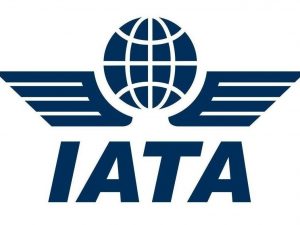Global passenger traffic demand in September rose 5.7 per cent compared to the same month in 2016, according to IATA’s global passenger traffic results. This was the slowest year-on-year increase since February. Domestic passenger traffic demand climbed 4.2 per cent in September compared to September 2016. India and China continued to lead all markets with double-digit annual traffic increases while elsewhere, results were mixed. Capacity rose 4.7 per cent and load factor slipped 0.4 percentage points to 82.2 per cent. “September’s growth in passenger demand was healthy, notwithstanding the impact of extreme weather events on the Americas,” said Alexandre de Juniac, IATA’s Director General and CEO. “Global economic conditions support rising passenger demand, but with higher cost inputs, the demand stimulation from lower fares has waned, suggesting a moderating trend in traffic growth.” International RPKs climbed 6.5 per cent with airlines in all regions recording growth compared to 2016. Total capacity climbed 5.6 per cent, and load factor rose 0.7 percentage points to 81.3 per cent. Asia-Pacific airlines’ traffic rose 8.7 per cent in September compared to the year-ago period, the strongest growth among regions. Capacity increased 7.8 per cent, and load factor climbed 0.6 percentage points to 78.3 per cent. A solid regional economic backdrop, helped by robust growth in China, is supporting passenger demand within the region.
Read More »10.7% growth in global air passenger traffic in April’17 over April’16
Global passenger traffic for April 2017 increased by 10.7 per cent as compared to April 2016, which was the fastest pace in six years, according to data provided by International Air Transport Association (IATA). The international passenger demand in April 2017 rose 12. 5 per cent as compared to April 2016, with all regions recording double-digit year-over-year traffic increases for the first time in 12 years. Total capacity climbed 7.7 per cent and load factor climbed 3.5 percentage points to 81.5 per cent. Demand for domestic travel climbed 7.7 per cent in April compared to April 2016, while capacity increased 6.2 per cent, causing load factor to rise 1.2 percentage points to 83.0 per cent. All markets reported demand increases with the exception of Australia, which showed a 2.1 per cent decline. IATA attributed the strong performance to a pick-up in global economic activity and lower airfares. After adjusting for inflation, the price of air travel in the first quarter was around 10 per cent lower than in the year-ago period and it was estimated that falling airfares accounted for around half the demand growth in April. However, it was also noted that the cabin ban on the carriage of large portable electronic devices (PEDs) from 10 Middle Eastern and African airports to the US seemed to have weighed down Middle East-North America passenger traffic. “April showed us that demand for air travel remains at very strong levels. Nevertheless there are indications that passengers are avoiding routes where the large PED ban is in place. As the US Department of Homeland Security considers expanding the ban, the need to find alternative measures to keep flying secure is critical. If the …
Read More » Tourism Breaking News
Tourism Breaking News
